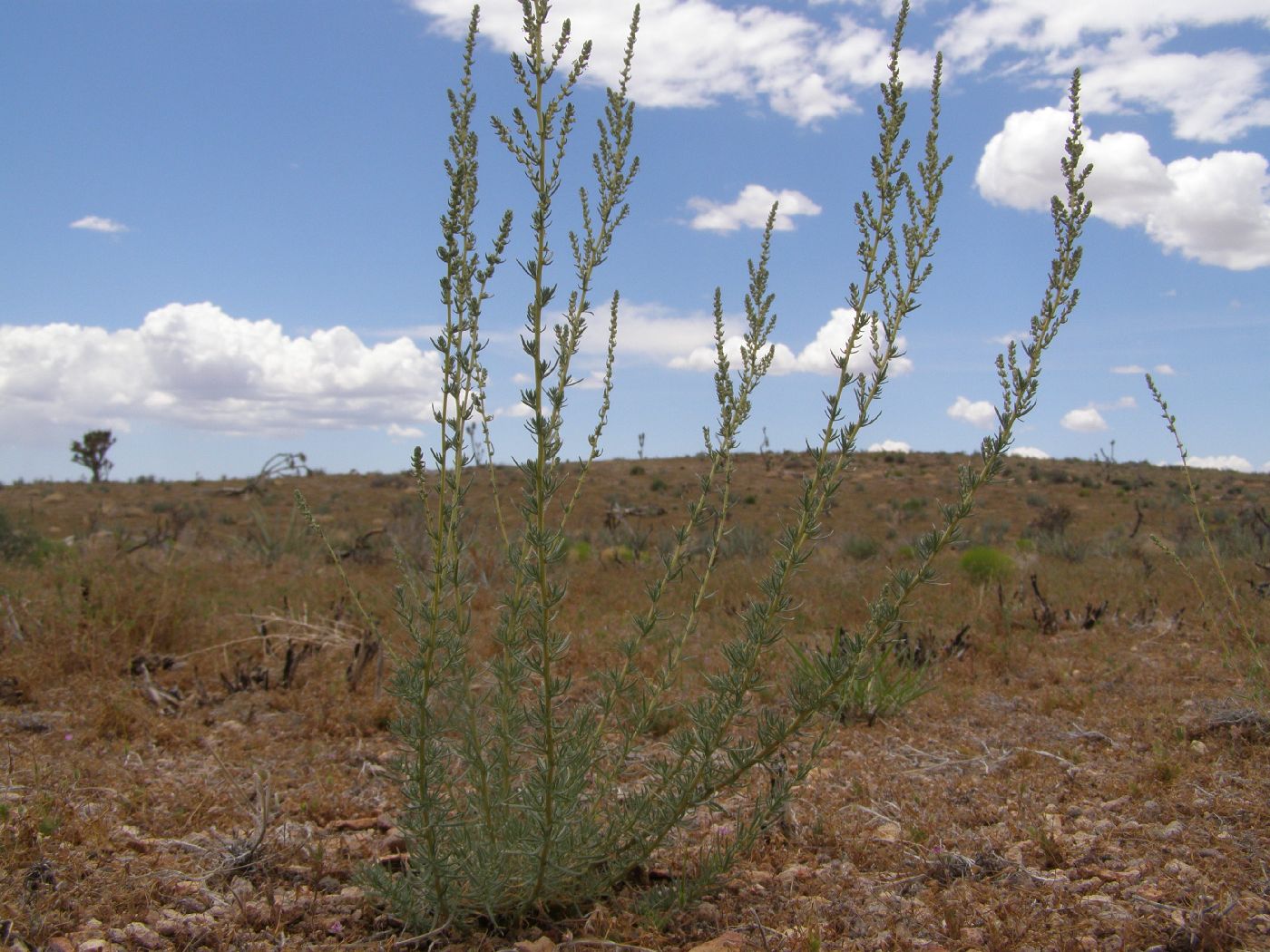Kochia
|
Family: Amaranthaceae |
Herbs and subshrubs, annual or perennial, glabrous or densely tomentose-sericeous. Stems erect, ascending, or prostrate, simple or branched, not jointed, not armed, not fleshy; branches alternate [proximal sometimes almost opposite]. Leaves alternate [rarely proximal almost opposite], sessile (sometimes narrowed into pseudopetiole); blade obovate-lanceolate, lanceolate, linear, or filiform, flat or semiterete, base truncate, margins entire, apex rounded. Inflorescences terminal, spicate or paniculately branched; flowers solitary or in 2-5-flowered clusters in axils of bracts; bracts leaflike. Flowers bisexual or pistillate, sessile; perianth segments 5, with horizontal, membranous wing [sometimes reduced to slightly winged tubercles] adaxially; stamens 5; stigmas 2-3. Fruiting structures: perianth covering utricles at maturity, utricles compressed-spheric or compressed-elliptic; pericarp free or nearly so, membranous. Seeds wedge-shaped; seed coat dull brown, slightly ribbed; embryo annular; perisperm copious. x = 9. Kochia occurs mostly in steppe, desert, and semidesert zones.
Fls perfect or pistillate; cal minute, subglobose, 5-lobed; stamens 5, exsert; ovary depressed, styles 2-3, elongate, filiform; cal at maturity enclosing the fr, each sep bearing a horizontal wing; pericarp thin, free; seed horizontal, flat; embryo annular; annual or perennial herbs or shrubs with narrow lvs and small fls sessile in the axils of bracts, forming dense, axillary or terminal spikes. 30+, mainly Old World. Gleason, Henry A. & Cronquist, Arthur J. 1991. Manual of vascular plants of northeastern United States and adjacent Canada. lxxv + 910 pp. ©The New York Botanical Garden. All rights reserved. Used by permission. |

